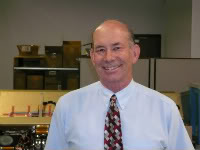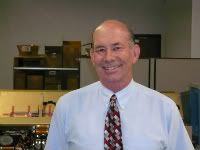About Wally Rippel, Contributor to "Renewable Energy Facts and Fantasies"

The chapter of the book Renewable Energy — Facts and Fantasies entitled “Cold Fusion” is a transcript of the interview with Wally Rippel on this subject.
Quote:
“Imagine a liquid fuel which stores ten million times as much energy as gasoline, which is a three billion times more abundant than oil, which costs one thirty thousandth that of gasoline per unit energy, and which one can safely drink. The fuel already exists and can be ordered over the internet at a cost of $250 per liter. It is called deuterium oxide or heavy water. Cold fusion offers the promise of an economic “engine” which can convert the stored nuclear energy of this fuel into electrical energy.”
Bio:
Wally was born and raised in southern California. He received a BS in Physics from Caltech in 1968 and an MS in Electrical Engineering from Cornell University in 1970. While a sophomore at Caltech, he became interested in electric vehicles as means for combating air pollution – which in turn led to his converting a 1959 VW bus to electric drive. During his senior year, in an attempt to focus university research on the technical problems of electric propulsion, he challenged MIT to a cross-country electric car race. The MIT students accepted and the result was the “Great Electric Car Race” – which, by the way, Caltech won.
Between 1976 and 1990, Wally was a member of the technical staff at Caltech’s Jet Propulsion Laboratory – where he focused on the development of batteries and electric vehicle drives based on induction motors. In 1985, he initiated a joint effort between JPL and AeroVironment for the development of a high-performance electric passenger vehicle – code named Santanna; requested funding from General Motors was not obtained and the effort was shelved. In 1987, Wally consulted for AeroVironment in connection with the development of a solar-powered “race vehicle” for GM – the Sunraycer. This vehicle zoomed to victory in the first Australian cross-country solar race, which in turn, paved the way for AeroVironment to re-propose the Santanna development. This time, GM came through with the funds and the result was the development of the Impact vehicle – which then led to the EV-1. The rest of the story can be seen in the film, “Who Killed The Electric Car”. Wally is now with AC Propulsion, Inc., a San Dimas company he co-founded in 1992, which develops and manufactures high-performance induction motor drives for electric vehicles. He is currently working on the next-generation development of induction motors and inverters for electric vehicles.
Wally now holds twenty four U.S. patents with four more on the way. His number one passion remains environmental protection.
Links
Here is a link for those wishing to learn more about cold fusion — also known as Low-Energy Nuclear Reactions (LENR) and Chemically Assisted Nuclear Reactions (CANR), and how hundreds of senior scientists are duplicating the initial finding of Fleishmann and Pons: LENR-CANR.org.
And here is a link to AC Propulsion, where I work to develop next-generation electric vehicles.


Cold fission confused as cold fusion as Renewable Energy:
The three phases of neutron seems to be very important split-up in understanding the energy output.This really is a fission energy only by deuterium oxide itself acting as a moderator by means of electrolysis current.Fusion occurs only pressure.Fission occurs by split-up which very natural in any electrolysis .Hence simply this may be called a cold fission instead.The byproducts of deuterium fusion include neutron, tritium and gamma rays,this means a fission possibility only. This may be comparable with Bose Einstein condensate only as the valence electrons split-up for three phases releasing energy predicted by Cooper-Bardeen electron pairs.
Some interesting energy flow from proton to electron-neutron split-up must be anticipated. Neutron split-up as positive ,negative and neutral plane of three phases may an interesting conclusion we can arrive at where energy is released. Hence this phenomena can be called cold fission only.It is simply that Twin Hydrogen is separated to produce energy out of hydrogen fission only.This may be called surface chemistry for a fission, by palladium or by nickel catalyst.
Sankaravelayudhan Nandakumar on behalf of Cape Renewable Energy Research Center ,Cape institute of Technolgy ,affliated to Anna University